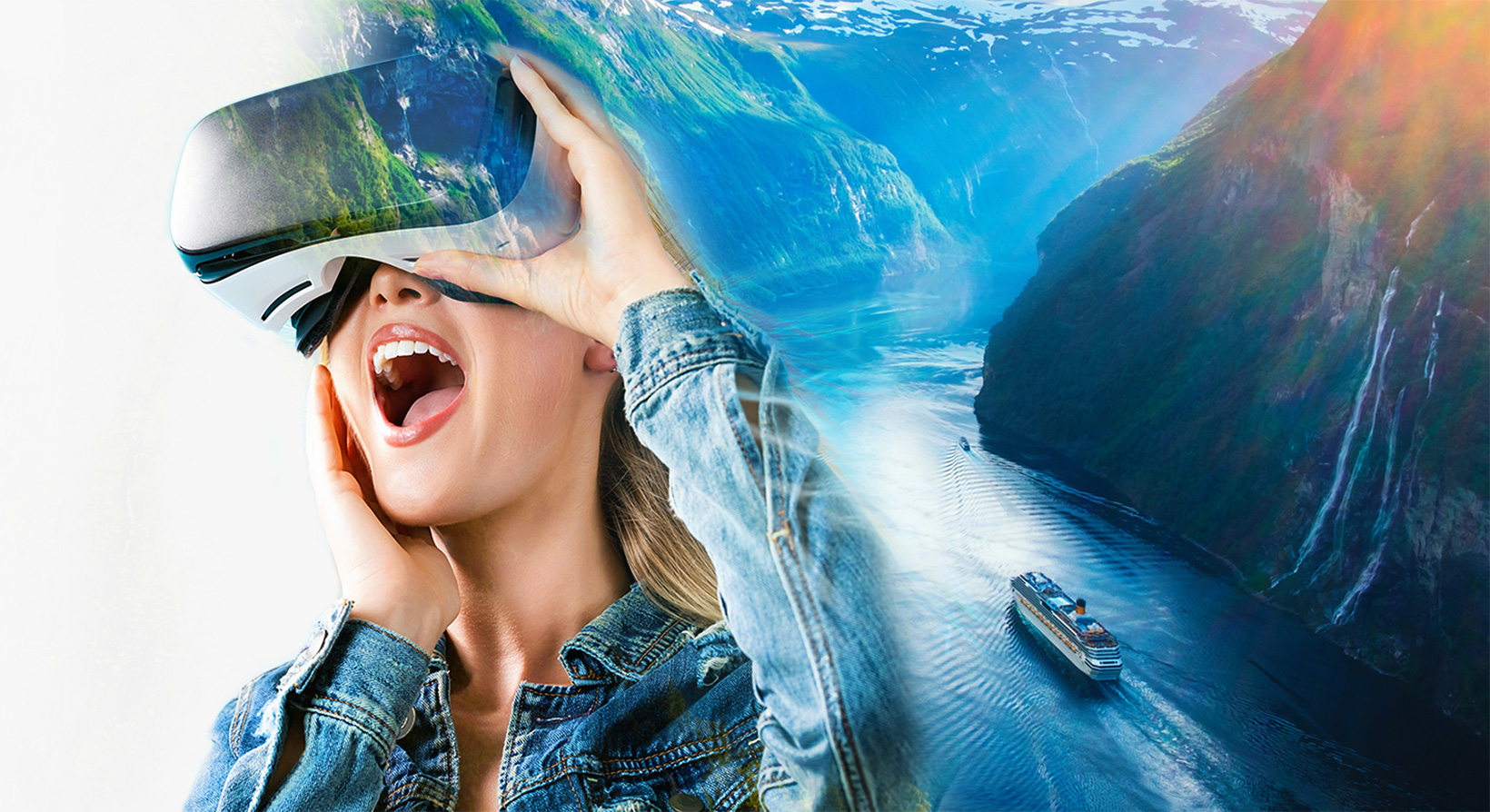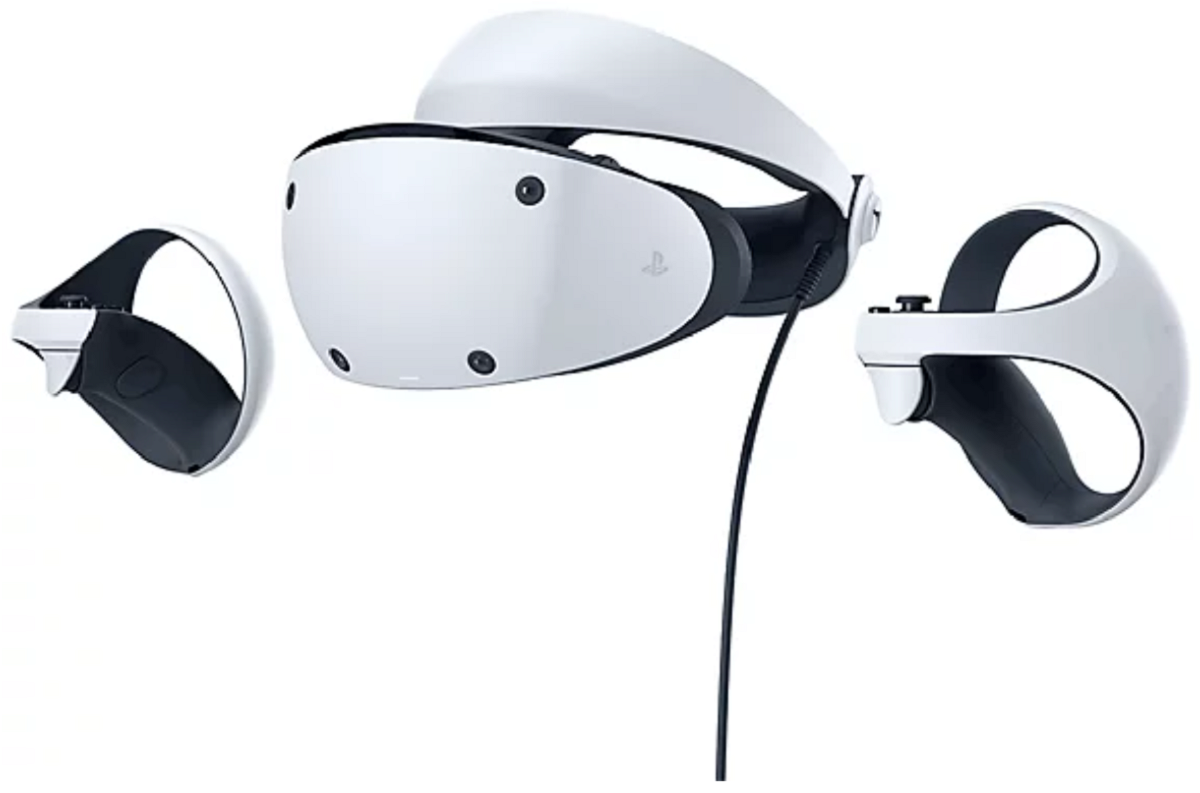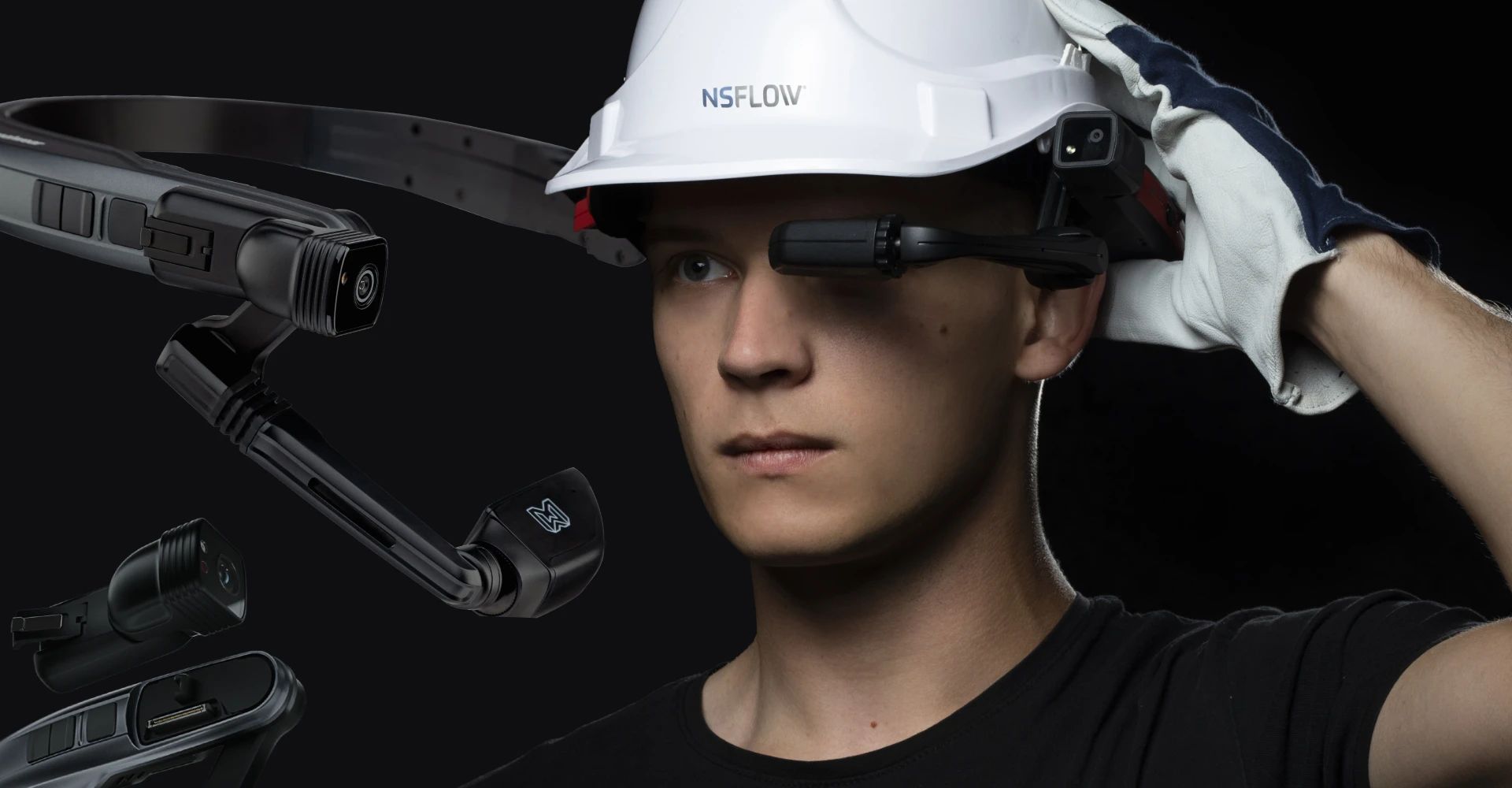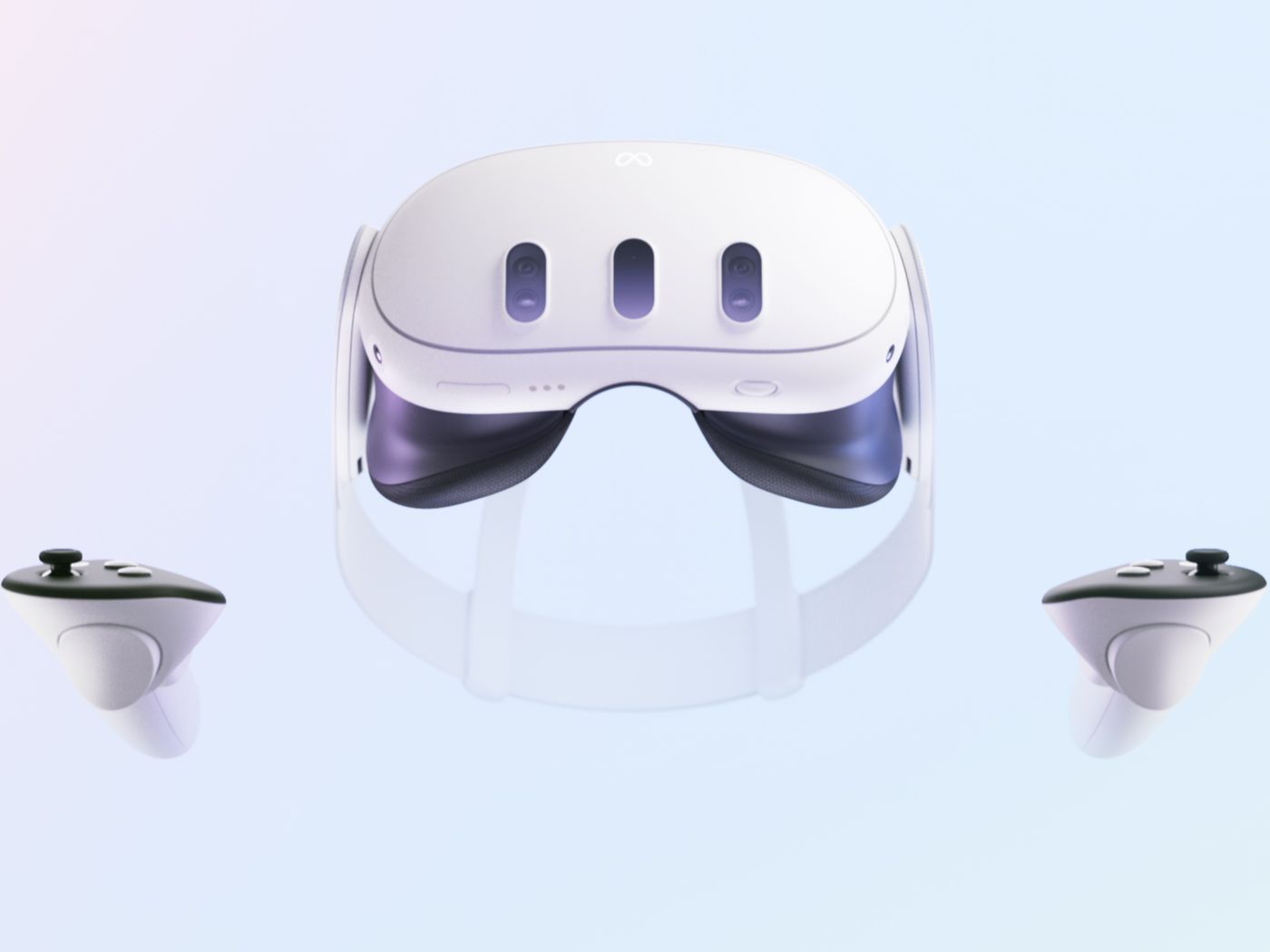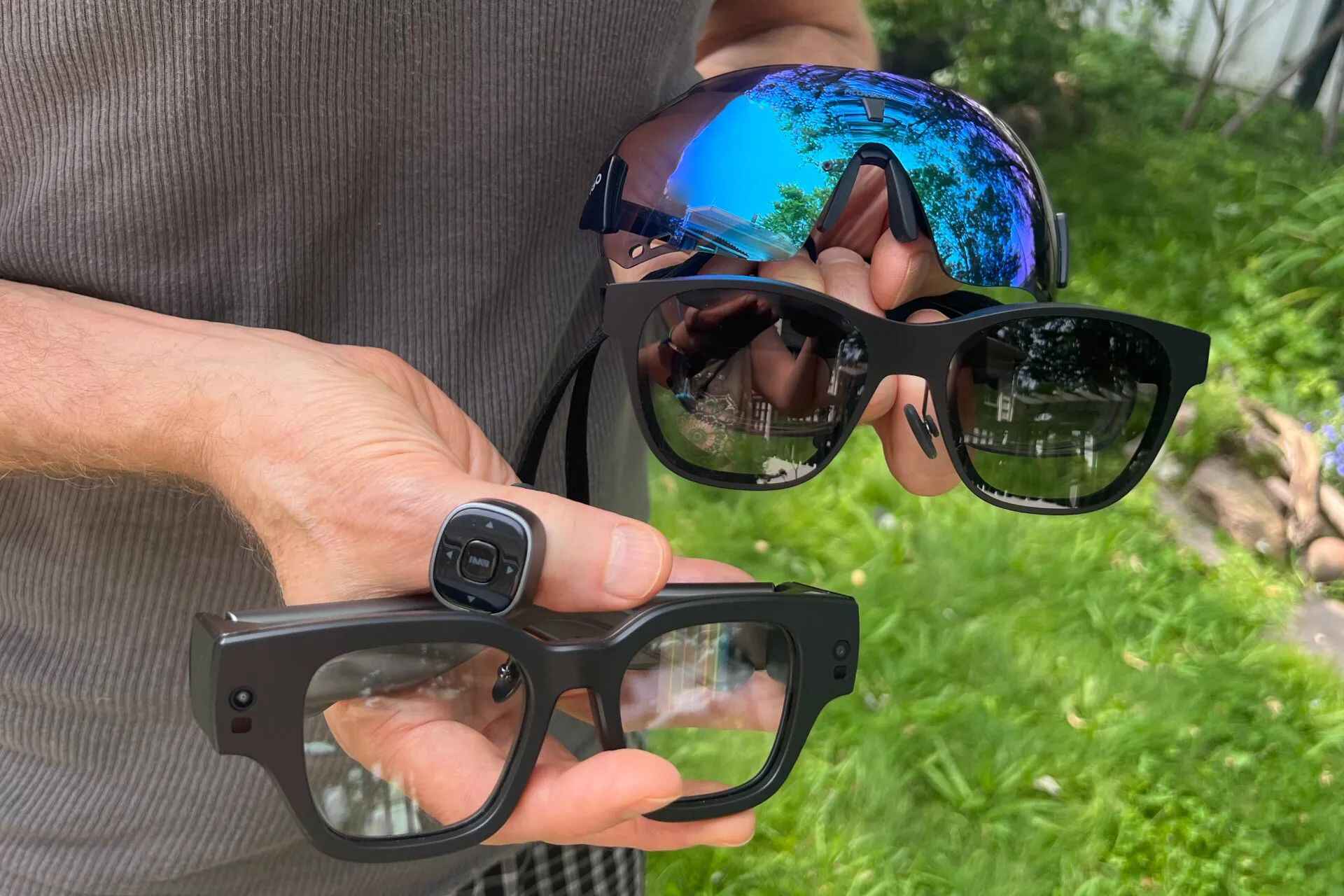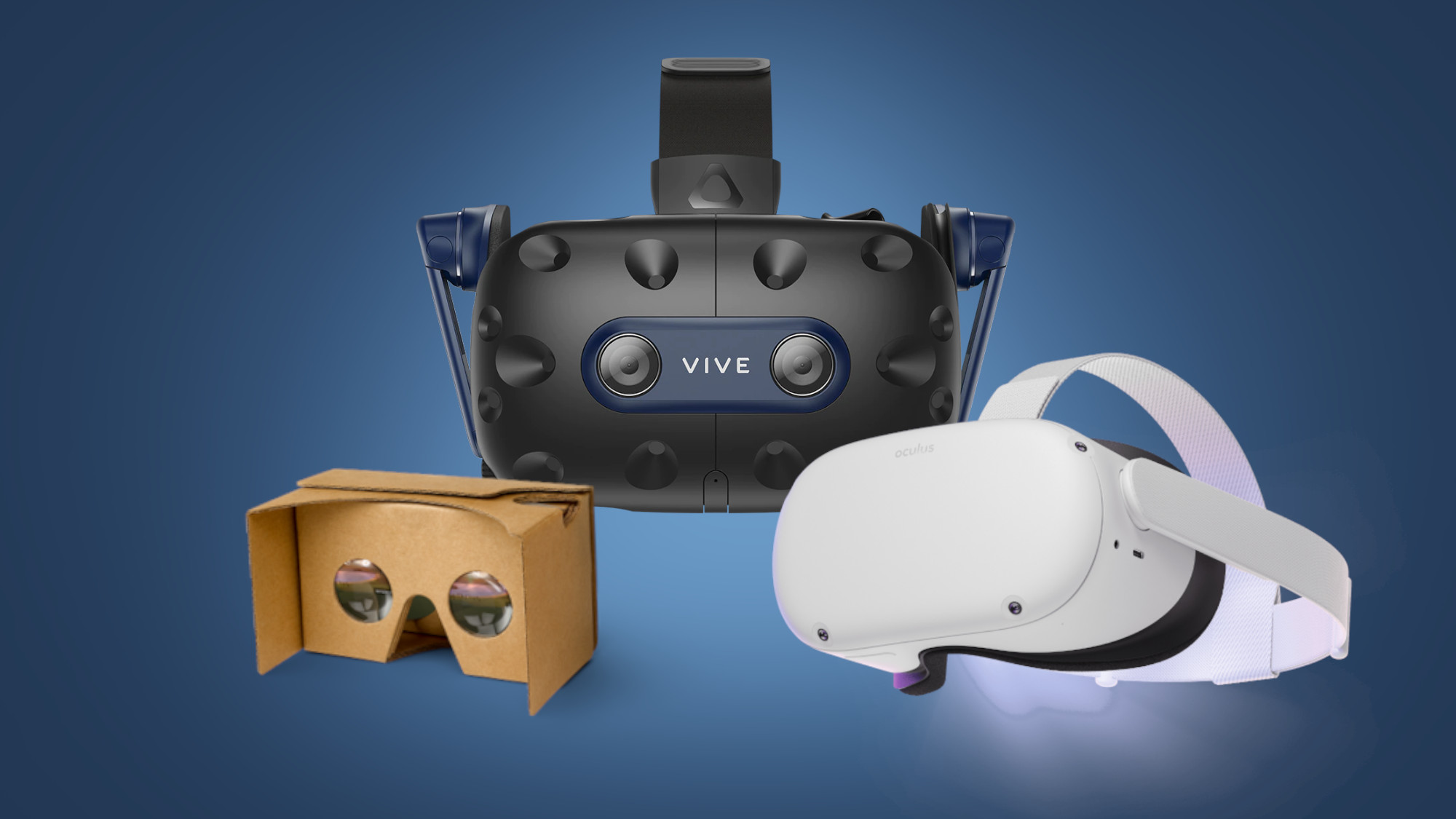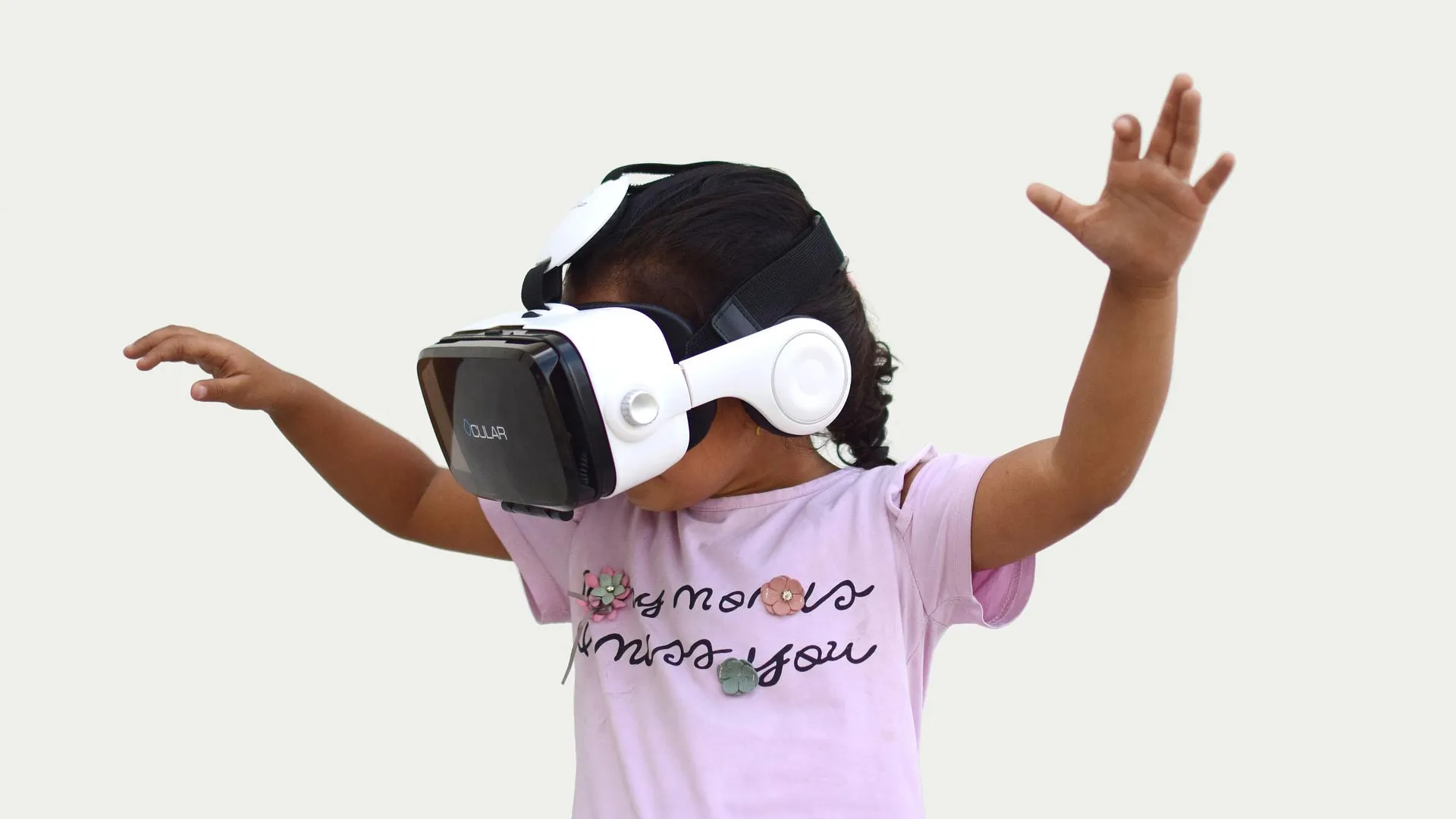Introduction
Welcome to the exciting world of virtual reality! If you’ve ever wondered what it would be like to step into another reality, then virtual reality goggles can take you on that incredible journey. These innovative devices are revolutionizing the way we experience entertainment, education, and so much more. With virtual reality goggles, you can immerse yourself in a digital world that looks and feels astonishingly real.
Virtual reality goggles, also known as VR goggles, are head-mounted displays (HMDs) that provide a fully immersive visual experience. They create a three-dimensional virtual environment by displaying images on high-resolution screens that are placed inches away from your eyes. This close proximity ensures that you have a wide field of view and feel completely surrounded by the virtual world.
One of the key features of virtual reality goggles is their ability to track your head movements in real-time, allowing you to look around and explore the virtual environment just as you would in the real world. This level of interactivity enhances the feeling of presence and makes the experience incredibly immersive.
Virtual reality goggles have revolutionized various industries, from entertainment and gaming to education and training. They offer a wide range of possibilities and have become a gateway to new and exciting experiences that were once unimaginable.
In this article, we will explore the various applications and benefits of virtual reality goggles. Whether you’re interested in exploring unique virtual worlds, engaging in thrilling virtual reality games, or using virtual reality for educational purposes, there’s a whole world waiting to be discovered through these incredible devices.
So, put on your virtual reality goggles, and let’s dive into the limitless possibilities of this fascinating technology.
The Basics of Virtual Reality Goggles
Virtual reality goggles, also known as VR goggles, are the gateway to a whole new digital world. These head-mounted displays (HMDs) are designed to provide an immersive visual experience, allowing users to step into virtual environments and interact with them in ways that were once only possible in our wildest dreams.
At their core, virtual reality goggles consist of a pair of high-resolution screens that are positioned right in front of your eyes. These screens display images and videos that make up the virtual world you’re exploring.
One of the essential features of VR goggles is their ability to create a sense of depth and perception. By displaying slightly different images to each eye, virtual reality goggles can trick your brain into perceiving a three-dimensional environment. This phenomenon, known as stereoscopic vision, adds realism to the virtual world.
Another crucial aspect of virtual reality goggles is their head-tracking capabilities. Built-in sensors detect the movement of your head and adjust the display accordingly, allowing you to look around and explore the virtual environment from various angles. This tracking system ensures that you have a fully immersive and interactive experience.
Virtual reality goggles can be connected to a variety of devices, such as smartphones, gaming consoles, or powerful computers, depending on the model. Some VR goggles function as standalone devices, whereas others require a connection to external hardware.
To experience virtual reality, you’ll usually need to download specific applications or games that are compatible with your VR goggles. These apps are designed to make the most of the immersive nature of VR and offer unique experiences tailored for virtual reality.
Comfort is a crucial factor when it comes to virtual reality goggles. Since you’ll be wearing them on your head for an extended period, manufacturers put a lot of effort into designing goggles to be lightweight and ergonomic. Some models even come with adjustable straps and padding to ensure a comfortable fit for a wide range of users.
Now that you understand the basics of virtual reality goggles, it’s time to explore the extraordinary experiences they offer. From breathtaking visuals to interactive gameplay and immersive simulations, virtual reality goggles are opening up a world of possibilities.
Immersive Visual Experience
One of the most captivating aspects of virtual reality goggles is the immersive visual experience they provide. When you put on a pair of VR goggles, you are transported to a whole new world that feels incredibly real.
The high-resolution screens in virtual reality goggles create stunning visuals that can rival the quality of real-life. With pixel densities and refresh rates continuously improving, modern VR goggles offer sharp and vibrant images that bring the virtual world to life.
What sets virtual reality apart from traditional forms of media is the sense of presence it provides. As you explore a virtual environment through your VR goggles, the visuals respond to your head movements in real-time. Whether you’re turning your head to look around or looking down to inspect an object, the visuals align with your perspective, immersing you in the virtual world.
Virtual reality goggles also support stereoscopic vision, which means you can perceive depth and distance in the virtual environment. This enhances the realism of the experience, making objects and scenes appear three-dimensional.
Furthermore, some VR goggles offer a wide field of view, which allows you to see a larger portion of the virtual world without feeling constrained. This expanded peripheral vision contributes to a more immersive and natural visual experience.
Thanks to advancements in technology, virtual reality goggles now support higher frame rates, reducing motion blur and creating smoother visuals. This is particularly important for fast-paced scenarios, such as action-packed games or simulations, where a high frame rate is necessary for a seamless experience.
Moreover, virtual reality goggles can support a variety of visual effects, such as dynamic lighting, realistic shadows, and interactive elements. These visual enhancements further deepen the sense of immersion, making you believe that you are truly a part of the virtual world.
Whether you’re exploring a beautiful virtual landscape, delving into a sci-fi adventure, or examining intricate details in a virtual museum, virtual reality goggles provide an unparalleled visual experience that transports you to places you’ve never been before.
In the next sections, we will delve into specific applications of virtual reality goggles, including 360-degree videos and photos, virtual reality gaming, simulations, travel, education and training, art and creativity, and social interaction.
360-Degree Videos and Photos
Virtual reality goggles offer a unique way to experience 360-degree videos and photos, immersing you in stunning visual content that surrounds you from all angles. With VR goggles, you can step into the scene and feel like you’re truly there.
360-degree videos capture the entirety of a scene, allowing you to look in any direction and explore different perspectives. Whether it’s a concert, a live sports event, or a scenic landscape, virtual reality goggles enable you to be in the middle of the action and feel a sense of presence as if you were physically present.
The immersive nature of 360-degree videos is enhanced by the head-tracking capabilities of VR goggles. As you move your head or turn your body, the view of the video adjusts accordingly, providing a realistic sense of immersion and enabling you to explore the surroundings.
Virtual reality goggles also support 360-degree photos, enabling you to view and interact with static images in a whole new way. Whether it’s a stunning natural landscape or an architectural marvel, you can appreciate the immersive details and feel like you’ve been transported to the location.
Virtual reality platforms and applications offer a vast array of 360-degree videos and photos across various genres, including travel, adventure, sports, and documentaries. By wearing VR goggles, you can embark on virtual tours of iconic landmarks, dive into the depths of the ocean, or even explore distant planets.
Furthermore, some VR platforms allow users to create and share their own 360-degree videos and photos. This gives individuals the opportunity to capture and showcase their memorable experiences, allowing others to step into their shoes and immerse themselves in their adventures.
360-degree videos and photos provide a new level of interactivity and engagement, enabling you to become an active participant rather than a passive observer. The ability to freely look around and explore the content creates a truly immersive and captivating experience.
Whether you’re traveling, exploring, or simply enjoying visual content from the comfort of your own home, virtual reality goggles bring 360-degree videos and photos to life, making you feel like you’re right in the middle of the action.
Now that we’ve explored the immersive visual experience and the exciting world of 360-degree videos and photos, let’s delve into another thrilling application of virtual reality goggles: virtual reality gaming.
Virtual Reality Gaming
Virtual reality gaming takes the exhilaration of traditional gaming to extraordinary new heights. With virtual reality goggles, you can immerse yourself in virtual worlds and become an active participant in the gameplay like never before.
VR gaming offers a level of immersion that simply cannot be matched by traditional gaming methods. By wearing virtual reality goggles, you step into the shoes of your in-game character, seeing the virtual world through their eyes and feeling a sense of presence that is unmatched by any other gaming experience.
The head-tracking technology in virtual reality goggles allows you to look around the virtual environment naturally. Whether you’re exploring a fantastical world, engaging in a high-speed race, or participating in a thrilling battle, the visuals respond to your head movements in real-time, providing a truly immersive and interactive gaming experience.
Another aspect that adds to the immersive nature of VR gaming is the ability to use motion controllers. These handheld devices track your hand movements and gestures, allowing you to reach out, grab objects, and interact with the virtual world. This level of physical involvement brings a whole new dimension to gameplay and enhances the feeling of being in the game.
Virtual reality goggles also enhance the perception of depth and distance in gaming. By displaying objects in three dimensions, VR gaming creates a sense of spatial awareness that can greatly impact gameplay. Whether it’s judging the distance to jump or aiming at an enemy, the extra dimension adds realism and a new level of challenge to the gaming experience.
One exciting genre of virtual reality gaming is virtual reality simulations. Whether it’s piloting an aircraft, driving a race car, or experiencing life as a virtual surgeon, VR simulations allow you to engage in realistic scenarios that mimic real-life experiences. These simulations offer not only thrilling gameplay but also serve as training tools for professionals in various fields.
Virtual reality gaming is a rapidly evolving industry, with game developers continually pushing boundaries to deliver unique and captivating experiences. From action-packed adventures to puzzle-solving challenges and social multiplayer games, the world of virtual reality gaming offers a vast array of possibilities.
Whether you’re a casual gamer looking for a new way to play or a dedicated enthusiast seeking the ultimate gaming experience, virtual reality goggles provide an immersive and unforgettable journey into the world of gaming.
Now, let’s venture into another application of virtual reality goggles: virtual reality simulations.
Virtual Reality Simulations
Virtual reality simulations have become a powerful tool across various industries, offering virtual environments that replicate real-world scenarios with astonishing accuracy. By using virtual reality goggles, users can engage in immersive simulations that provide valuable training, education, and even therapeutic benefits.
One area where virtual reality simulations excel is in training. From medical professionals to firefighters and military personnel, virtual reality offers a safe and controlled environment for individuals to practice and enhance their skills. For example, surgeons can use VR simulations to perform virtual surgeries, allowing them to refine their techniques and explore different scenarios without the risk associated with operating on real patients.
Virtual reality simulations also play a crucial role in the field of aviation. Pilots can use VR to familiarize themselves with cockpit controls, practice emergency procedures, and simulate challenging flying conditions. These simulations provide a cost-effective way to train pilots and ensure they are well-prepared for any situation they may encounter in the skies.
Beyond training, virtual reality simulations are also valuable in the field of education. Students can step into virtual classrooms, historical landmarks, or scientific environments, enhancing their learning experiences and gaining a deeper understanding of complex subjects. By providing an interactive and immersive learning environment, virtual reality simulations make education engaging and memorable.
Therapeutic applications of virtual reality simulations are also being explored. In the field of psychology, virtual reality can be used to treat phobias and anxiety disorders by exposing patients to virtual environments that trigger their fears in a controlled manner. This allows individuals to confront and overcome their anxieties gradually.
Virtual reality simulations are not limited to professional and therapeutic applications. They also offer entertainment experiences that go beyond traditional forms of media. Whether it’s exploring a virtual museum, interacting with virtual characters in an adventure game, or participating in a realistic sports simulation, virtual reality simulations provide an immersive and captivating entertainment experience.
As technology continues to advance, virtual reality simulations will become increasingly realistic and sophisticated. The ability to replicate real-world scenarios with accuracy and interactivity opens up new possibilities for training, education, therapy, and entertainment that were once unimaginable.
Now that we’ve explored the applications of virtual reality simulations, let’s embark on another exciting journey: virtual reality travel.
Virtual Reality Travel
Virtual reality travel allows you to explore the world without leaving the comfort of your home. By donning virtual reality goggles, you can embark on virtual tours and experience destinations from around the globe in stunning detail.
Virtual reality travel opens up a world of possibilities for those who may not have the means or opportunity to physically visit certain locations. Whether it’s standing on the top of a mountain, walking through bustling city streets, or swimming in the crystal-clear waters of a tropical paradise, virtual reality allows you to immerse yourself in these stunning environments as if you were actually there.
Virtual reality travel platforms provide a vast array of destinations to explore. You can visit iconic landmarks, famous cities, and natural wonders with just a few clicks. Whether you want to wander through the medieval streets of Europe, marvel at the ancient pyramids of Egypt, or witness the beauty of the Great Barrier Reef, virtual reality travel gives you a front-row seat to the world’s most spectacular sights.
The immersive nature of virtual reality travel is enhanced by the ability to freely look around and navigate the virtual environment. You can turn your head in any direction to take in the panoramic views, giving you a sense of being physically present at the location.
One exciting aspect of virtual reality travel is the ability to visit destinations that may be challenging or impossible to reach in real life. You can venture into remote areas of the world, explore underwater realms, or even visit fictional locations from movies and video games. The possibilities are endless.
Virtual reality travel also offers interactive features that enhance the experience. You can learn about the history, culture, and significance of each location through informative audio guides or interactive elements. Some platforms even allow you to participate in virtual activities and mini-games, adding an extra layer of engagement to your virtual travel experience.
Whether you’re a travel enthusiast looking for inspiration, a dreamer yearning to explore new horizons, or simply seeking a way to experience different cultures and environments, virtual reality travel can transport you to places you’ve always wanted to visit.
Now that we’ve explored the world of virtual travel, let’s continue our exploration of virtual reality applications by diving into virtual reality education and training.
Virtual Reality Education and Training
Virtual reality has immense potential in the field of education and training, offering immersive and interactive experiences that can revolutionize the way we learn and acquire new skills. By using virtual reality goggles, students, professionals, and individuals from all walks of life can engage in experiential learning like never before.
Virtual reality in education provides a unique opportunity to transport students to different time periods, geographic locations, or even fictional worlds. Whether it’s exploring ancient civilizations, witnessing historical events, or delving into scientific concepts, virtual reality enhances the learning experience by providing a hands-on and immersive environment that captivates students’ attention.
In virtual reality, students can actively participate in simulations and educational scenarios. They can conduct virtual experiments, solve complex problems, and engage in collaborative activities, fostering critical thinking, problem-solving skills, and teamwork.
Virtual reality also has tremendous potential in specialized training programs. Professionals can use virtual reality simulations to practice real-world scenarios in a safe and controlled environment. From medical simulations to emergency response training, virtual reality provides a realistic and risk-free platform for individuals to develop their skills and improve their performance.
Virtual reality allows for repetition and self-paced learning, providing personalized educational experiences. Students can revisit challenging concepts, experiment with different approaches, and learn at their own speed, ensuring a deeper understanding and retention of the material.
Furthermore, virtual reality can make learning more accessible by breaking down physical barriers. Students from remote areas can have access to the same educational opportunities as their urban counterparts, and individuals with disabilities can participate fully in virtual learning experiences, leveling the playing field and promoting inclusivity.
Virtual reality simulations and training programs can also provide cost savings. Expensive physical equipment, travel expenses, and logistical challenges associated with traditional training methods can be minimized or eliminated with virtual reality. This makes training more affordable and scalable, benefiting both individuals and organizations.
Virtual reality education and training have the potential to transform the way we learn and acquire skills. This technology opens up new possibilities for engagement, interactivity, and effective learning outcomes.
Now that we’ve explored the applications of virtual reality in education and training, let’s dive into the fascinating world of virtual reality art and creativity.
Virtual Reality Art and Creativity
Virtual reality has expanded the boundaries of artistic expression, opening up new avenues for creativity and immersive experiences. By using virtual reality goggles, artists can explore innovative mediums, push the limits of their imagination, and engage audiences in unprecedented ways.
Virtual reality art offers a new canvas for artists to showcase their skills and create immersive and interactive experiences. Artists can sculpt three-dimensional objects, paint in a virtual space, or even compose virtual reality music. These creations can be viewed and experienced by audiences through virtual reality goggles.
Virtual reality art installations enable viewers to step inside the artwork itself, blurring the line between the spectator and the art. Through the immersive nature of virtual reality, participants can explore and interact with the artwork from various angles, creating a truly transformative and engaging experience.
Virtual reality also allows for collaborative artistic ventures. Artists from different corners of the world can come together in a shared virtual space to create collaborative artworks. This opens up new possibilities for multidisciplinary projects and cross-cultural collaborations.
Virtual reality art experiences can provoke strong emotional responses and transport audiences to otherworldly realms. By immersing viewers in a virtual environment, artists can evoke feelings of wonder, joy, surprise, or even introspection. Virtual reality can create a sense of presence and connection to the art that is deeply impactful.
Moreover, virtual reality empowers individuals to become creators themselves. Through virtual reality platforms, users can build their virtual worlds, design virtual objects, and bring their own artistic visions to life. This level of interactivity and creative agency fosters a sense of empowerment and ownership over the artmaking process.
Virtual reality can also be used as a tool for architectural and spatial design. Architects and designers can visualize and walk through virtual spaces, allowing them to refine their designs and fully understand the spatial dynamics. This not only enhances the creative process but also provides a realistic preview of what the final structure will look and feel like.
As virtual reality technology advances, it will continue to unlock new possibilities for artistic expression. From virtual reality films and storytelling to immersive virtual galleries and performances, the intersection of art and virtual reality is a realm of endless exploration and innovation.
Now that we’ve explored the realm of virtual reality art and creativity, let’s move on to another exciting application of virtual reality: virtual reality social interaction.
Virtual Reality Social Interaction
Virtual reality has the power to revolutionize social interaction by bringing people together in a digital space regardless of physical distance. Virtual reality goggles enable users to engage in immersive social experiences, fostering connections and creating a sense of presence as if they were in the same room.
One of the key advantages of virtual reality social interaction is the ability to communicate and interact with others using avatars. Through virtual reality platforms, users can create personalized avatars that represent them in the virtual world. These avatars can move, gesture, and even mimic facial expressions, adding a layer of realism and enhancing the feeling of social presence.
Virtual reality social platforms allow individuals to connect with friends, family, and even strangers from all over the world. Whether it’s participating in virtual events, attending virtual meetings, or simply hanging out in virtual environments, virtual reality provides a way to engage in social activities in a more immersive and interactive manner.
Virtual reality social applications offer a variety of social experiences, such as virtual parties, concerts, art galleries, and multiplayer games. These experiences provide a sense of togetherness and shared presence, even when physically separated.
Virtual reality social interaction also enables individuals to step out of their comfort zones and explore new identities and experiences. The anonymity provided by avatars allows people to freely express themselves, fostering creativity, self-expression, and personal growth.
Virtual reality social environments can be inclusive and accessible to individuals with disabilities or mobility limitations. By providing equal access to social experiences, virtual reality promotes inclusivity and breaks down physical barriers that may hinder social interactions in the real world.
Furthermore, virtual reality social interaction can facilitate cross-cultural exchanges and foster understanding and empathy. People from different backgrounds and locations can come together in a shared virtual space, exchanging ideas, sharing experiences, and gaining perspectives that may not have been possible otherwise.
While virtual reality social interaction cannot fully replace face-to-face interactions, it adds a new dimension to socializing and creates unique opportunities for connection and shared experiences. It enables us to connect and engage with others in ways that were once considered technologically impossible.
Now that we’ve explored the exciting world of virtual reality social interaction, let’s conclude our journey through the diverse applications of virtual reality technology.
Conclusion
Virtual reality goggles have opened up a world of endless possibilities and immersive experiences. From the basics of virtual reality goggles to the various applications we have explored, it’s clear that this technology is shaping the way we entertain, learn, train, create, and interact.
Virtual reality goggles provide an immersive visual experience, bringing us into virtual worlds that look and feel astonishingly real. Whether we are exploring 360-degree videos and photos, engaging in virtual reality gaming, or delving into virtual reality simulations, the level of immersion and interactivity is truly captivating.
Virtual reality travel transports us to stunning destinations that we may not have the opportunity to visit physically, while virtual reality education and training revolutionize how we learn and acquire new skills. Virtual reality art and creativity allow artists to push the boundaries of their imagination and engage audiences in transformative experiences.
Last but not least, virtual reality social interaction brings people together in a digital space, fostering connections and creating a sense of presence that bridges physical distances.
The applications and benefits of virtual reality goggles continue to evolve as technology advances. As the resolution, processing power, and accessibility of virtual reality goggles improve, we can expect even more immersive and realistic experiences in the future.
Virtual reality goggles have the potential to revolutionize industries, transform education, enhance creativity, and redefine social interaction. Whether we’re exploring new worlds, enhancing skills, connecting with others, or simply immersing ourselves in captivating experiences, virtual reality goggles offer a new dimension to how we perceive and interact with the world around us.
So, put on your virtual reality goggles and embrace the possibilities that this incredible technology offers. Step into new realities, engage with immersive content, and be a part of the ever-expanding world of virtual reality.







